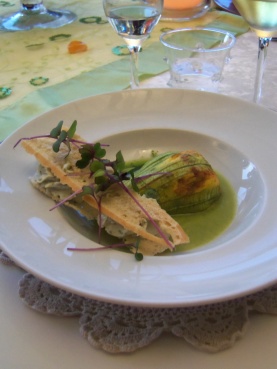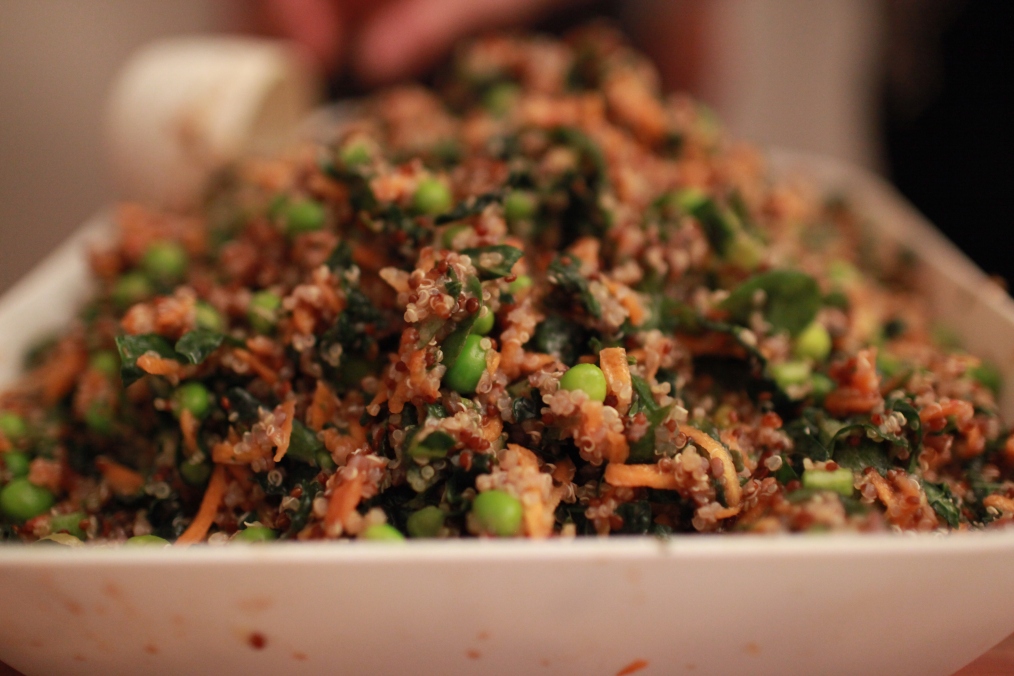Eating is the catalyst and the conduit for so many cultural and social experiences that I hated missing out on as a vegetarian. I was born and raised that way- both of my parents became vegetarian years before I was born and my entire family remains committed vegetarians. Over the past few years, I have departed from this value system, receiving responses from my sisters and parents ranging from bewilderment to concern.
When I was young, I would say, “When I grow up, I’m going to eat Big Macs and chicken wings!” (I also, for the record, desperately craved squishy white bread and creamy peanut butter to replace the crumbly whole wheat home baked loaves and oily separated natural peanut butter I was served). Of course once I was autonomous, I was disgusted by the thought of any of it and could not imagine putting those processed dead substances in my body.
When I began actually trying real meat, at first I was frustrated with how little I could handle. I could taste little bites but was still too weirded out by the texture of flesh in my mouth to eat much of it. Now I am grateful for this sensitivity. I am horrified by the thought of eating unclean, unhealthy animals who were brutalized. However, even ethically raised or harvested animals are still living beings whose lives are being taken and this always has been and will always be a heavy, complicated process – one that I will never engage in casually. So as I have been unlearning my vegetarianism, I have been learning as much as I can about the processes by which animals end up as food- different slaughtering and butchering techniques and traditions, the differences between grass fed and corn fed beef, the ways that unseasonably warm waters on the west coast affect the taste of the oysters, the impact of overfishing and the rising acidity of the ocean on sea species central to sushi production…if I was not eating from the ocean I guarantee I would not be as attuned to the crises playing out there. I feel more plugged into the planet now that I eat (some) meat and seafood. I pay attention more. I feel the affects of what’s going on in our ecosystems and food production systems more than ever before. I also feel more connected to the people of the past in this place I live- Brooklyn, Long Island, the coast of the Atlantic- a place where the indigenous people, and then all of the colonizers and immigrants following them, ate from the ocean because it’s right here! (If I were still living in Ohio, I would not be as passionate about learning how to eat from the sea responsibly because the responsible thing to do there would be to not eat from it). Feeling more plugged into the planet through consuming meat feels somewhat ironic for me because I know my mother, who is so disturbed by my digression, is vegetarian precisely because of how plugged into the planet she feels.
A proto-omnivorous moment I had years ago took place in the home of a Palestinian farmer family in a village near Jenin. I had been helping their cooperative sell their fair trade olive oil in the States and was being hosted by this family during my first visit since the collaboration began. It was Id and they had just slaughtered a lamb and grilled it, serving it in small dark juicy chunks accompanied by a mouth-watering array of sauces, dips, spice mixes, pickles, yogurt, bread, and veggies. I ate a small amount (I remember exactly 5 pieces but may have projected that number onto the memory in retrospect). It was a space within which my commitment to vegetarianism did not feel as important as gratefully participating in the intimate, generous experience of this family’s celebration. I had been concerned that my stomach would be upset given that it had never had such things in any substantial quantity. I was totally fine.
Years later, I had the privilege of visiting the tiny magical universe of Sutton Island in the Gulf of Maine. My friends kayaked out to the big rock near the dock in front of our house and harvested some mussels. After they cleaned them on the front porch, we made paella with them, throwing them into the large pot, covering it, and as they were coaxed open by the steam, we smelled their oceanic juices seep out and infuse the rice and vegetables.
I knew that if I were to ever try eating mussels that THIS was the moment- mussels harvested by my friends’ hands in a small and sustainable amount, in the cleanest water I had ever been in. And I asked myself if eating a plastic-wrapped processed soy product could in any way, spiritually or nutritionally, feel better than eating these sea creatures freshly plucked from a rock. The answer was no. Thus began my more deliberate mission to expand my food experience to include animals. These were both experiences in which the values and logic of what was right to eat came into focus as more layered and complex than any YES/NO position on meat could encompass.
I tease my mother by calling her a fundamentalist vegetarian because she believes that everyone should be vegetarian all the time. There are no other points to be considered other than avoiding taking unnecessary life as she sees it. And this is a serious question- is it necessary for us to kill and eat animals? (“Us” being urbanized people living in the year 2013). The answer might, on a certain level, be NO. Not technically. But it all comes down to the interconnectedness of all the systems involved in what we eat- it makes it so that it is very difficult, and possibly not ideal, to maintain a pure and singular set of dietary restrictions if one’s aim is to eat most ethically and healthily, for planet and self. One meal might offer the choice between processed soy product and sustainably farmed fish, in which case the fish might be the most ethical and clean way to eat in that situation. In another context, one might have to choose between factory farm chicken and a vegetable dish containing avocado flown half way around the world with fossil fuel guzzling engines. In that situation, the harm and health dichotomy get complicated. This might be a pick your battles situation, and one in which there’s no guaranteed clear winning position because either way, you are implicated in a losing food production industry. With an industrialized food system relying on so much fossil fuel, plastic, chemicals, and so on, eating vegetarian is not automatically a less harmful choice. It can be- if whole, local, seasonal, sustainably grown and produced foods are the boundaries around one’s eating decisions. But just going for the non-animal option at a restaurant or the grocery store doesn’t guarantee righteousness unfortunately.
Adding a different dimension of decision-making factors, there are contexts in which one is being offered special dishes prepared lovingly by people who are sharing their knowledge, their heritage or their home. For me, fully experiencing different cultures and communities requires responding to such welcomeness with openness, curiosity, and gratitude. It is the only way to learn. And show respect. There is no room for rigid restrictions that negate the wisdom of a cuisine being presented. There are dishes that are so central to cultures, classics enjoyed on sometimes obsessive levels by entire countries and larger geographic areas, that I feel must at least be tried. Otherwise a significant element of a place that I am in will be missed. And I HATE missing out. (This is admittedly the most questionable of my reasons for abandoning vegetarianism personally.)
So I have developed a situational omnivorousness that I do not claim to be righteous but is at least an attempt to live fully and cultivate a multifaceted relationship to food. I am sure it will continue to evolve, especially as our planet keeps changing and I learn more.



















